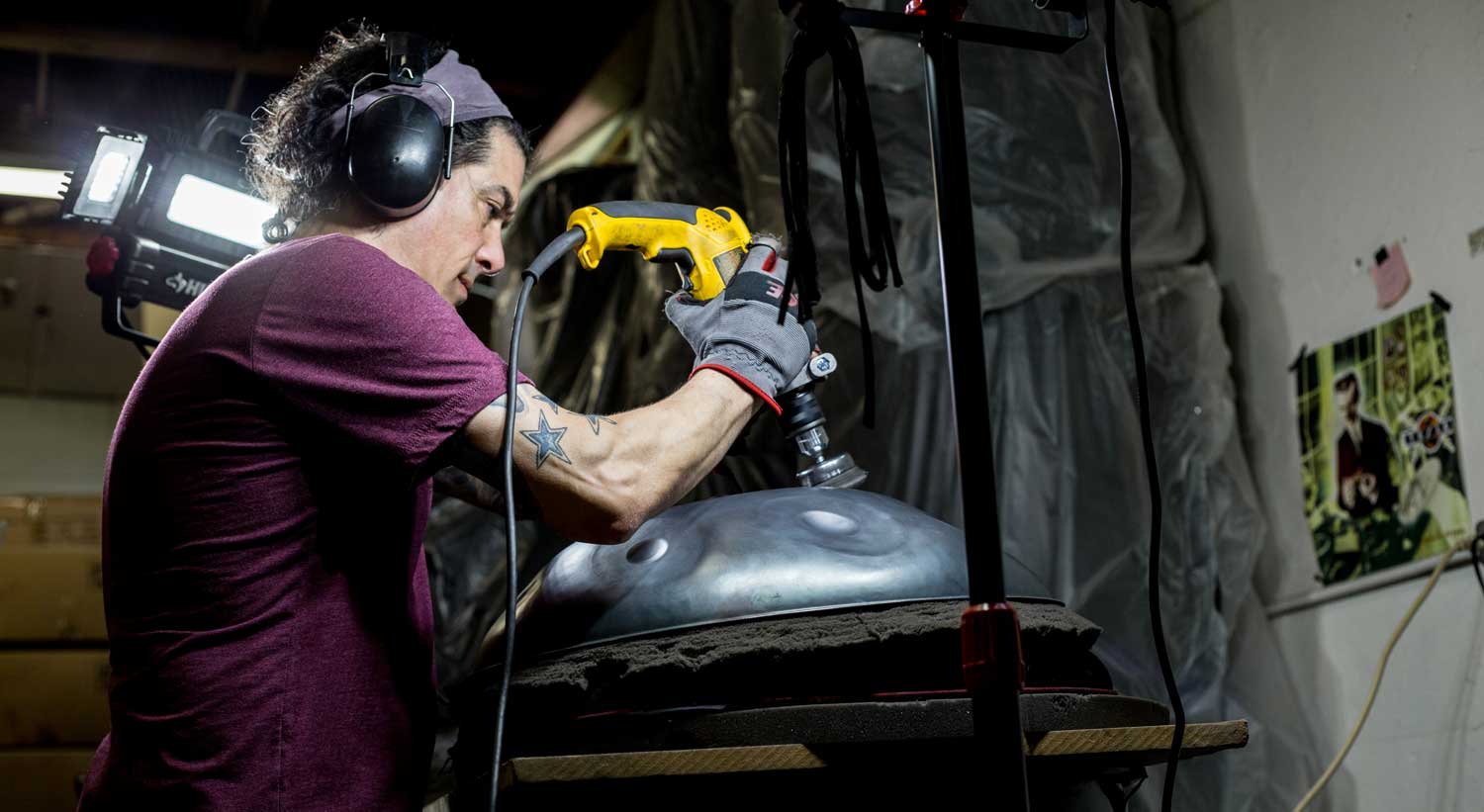The Purpose of Emergency Lighting From a Commercial Point of View
Article
Visiting technical facilities at production sites is an integral part of our consulting. In particular, the infrastructure set-up, which does not belong primarily to the production process and only has a supporting function, allows important insights into the general operational processes – and even into the thought process of the production teams involved.
This correlation is even more interesting in industries with state-regulated products, such as the pharmaceutical, cosmetics and food industries. The production areas in these companies underlie strict regulations due to very high quality standards, and therefore they usually are in good shape in terms of safety at work. However, the fact that an organisation is seriously committed to quality and safety becomes evident if the management also focuses its attention on surrounding areas. If we discover weak points there or conditions presenting a stark contrast to the production areas, it clearly reveals a certain kind of corporate culture: the company fosters a culture of reacting and obeying to rules, as opposed to showing initiative or self-reliant prevention.
Navigating hazardous paths
One example of our consulting experience illustrates this issue quite well: during our visit of a factory site at one of these above-mentioned industries, we also took a close look at the technical level of the large production site. This technical area was situated directly above the production level and only separated by an inserted ceiling. It mainly contained the technical equipment for air conditioning and lighting for the rooms of the lower levels, in addition to smoke detectors and sensors for detecting poisonous gases. Although there was no permanent work place on this floor, technicians regularly had to do maintenance and repair works on filters, ventilation systems or electric equipment.
“the fact that an organisation is seriously committed to quality and safety becomes evident if the management also focuses its attention on surrounding areas”
On entering the technical area, we immediately noticed an obvious danger spot: it was only possible to walk on the floor on specifically marked pathways. In between these, the floor merely consisted of a simple, suspended ceiling for the production level underneath. Originally, this level was designed to be one large room without any internal partitioning. After a number of additional building works, however, there are several walls and doors nowadays. In combination with the technical infrastructure, the walkways are narrow, long and winding, so that only insiders are able to find their way properly. It is also important to mention that there are no windows on this floor; it is equipped with electric lights.
The dangers arising from this situation only become evident when analysing the complex background. Therefore, many of our questions began with “What if…?” Our questions addressed mainly scenarios underlining processes that are outside of daily routine.
Emergency lighting
At the far end of a winding path used by technicians for doing maintenance work on a pipeline filled with ammoniac gas for the central cooling device, we asked the following question: “What would happen if there was a power cut right now?” The workers reacted with surprise and then realised that it would become completely dark, since there was no emergency lighting for escape routes. When asking them how any person could possibly escape safely from these entangled and confusing paths, they answered that everybody nowadays owned a smart phone with a flashlight function. They also proposed the idea of supplying torches as part of the workers’ standard equipment from now on.
However, would a torch in a worker’s tool bag or even on his helmet be sufficient?
Humans in fact are visual beings. Sudden darkness deprives them of their most important natural sense and leads to disorientation. People sense danger in darkness and fear for their safety. This fear can rise to panic. Human beings tend to react differently in emergencies than we plan. Leaking gases or accidents automatically result in a higher production of adrenalin and lead to unexpected or even unpredictable behaviour.
Another example of our consulting experience highlights this effect of adrenalin.
At a production site for synthesis of organic chemicals the technicians noticed the start of a fire while doing maintenance works. With great presence of mind, a young man from the team ran into the corridor to fetch the nearest fire extinguisher, while another colleague raised the alarm of the plant fire brigade. When the fire brigade arrived shortly afterwards, the fire had already been extinguished and the situation was under control. The young worker, however, felt an inexplicable pain in his knee. The pain became so severe that the man had to be treated by a doctor. It only transpired later that the young worker had apparently collided with a steel pallet in the corridor while fetching the fire extinguisher without being aware of it. His level of adrenalin had been so high that he did not even realise his injury, which became so bad that he had to rely on support when he was walking.
“humans in fact are visual beings – sudden darkness deprives them of their most important natural sense and leads to disorientation”
In rooms without any daylight a complete failure of the lights and sudden darkness can easily lead to a feeling of confinement, triggering an escape reflex. In an extreme case, the rapidly rising level of hormones may lead to panic. In such a case, a systematic search for a torch is not imaginable.
Considering the confusing ways and hazards of falling down in the above outlined case, a severe accident is more than likely. If in addition, poisonous ammoniac gas evaporates, thus making a fast escape vital, the situation will consequently result in a fatal incident.
What is the solution in an emergency?
A simple solution for minimising the risks of accidents in emergencies is safety lighting. Functioning safety lighting has to be in place exactly for dangerous situations like these, when the regular electric lights fail, since it shows people the safe way out. Technically, it is easy to set up safety lights with battery-powered lamps, which also function in a general power cut. Safety lights have to be visible in every room. In addition, they should be marked with a clear symbol, pointing to the emergency exit with an arrow.
The question is why had this simple solution not been installed in these technical areas, despite being regulated by law in this particular country even though they were part of the instalments in other areas of the company site?
Apparently, an external expert view is necessary. Employees tend to focus on their daily operations, especially when there is a lack of time. These include the daily topics, such as productivity and quality, making the presence at other places necessary, where they have to regulate these issues again and again. In contrast, an external person is able to concentrate on crucial topics outside the core processes of production, for instance on safety at work. This way, the external expert reaches areas usually of less attention and gains more insight. Safety experts know from experience and due to their professional skills that very rare situations do occur, which may have terrible consequences. Therefore, they should always have awareness and think in advance according to the motto: “What would happen, if…?” It is important that they engage in a discussion on all possible scenarios in a constructive way, without being a know-it-all.
The example of the production site we were visiting revealed that neither the members of the management team nor the safety experts of the company had ever been in the technical area before. Moreover, the maintenance and repair processes were not integrated sufficiently into the risk assessment system. After identifying the risks and analysing the causes, it was easy to find effective measurements for minimising safety risks. The management, consequently, decided to allow maintenance work on the technical floor only with two workers being present. Furthermore, it became obligatory to carry emergency filters in case of gas leaks. Naturally, the management also resolved to install appropriate safety lighting. After a short discussion, the safety lighting also became part of preventive maintenance to ensure it works properly in an emergency. Technical experts are capable of imagining different causes for problems, which normally evolve without notice and therefore may lead to technical failures in emergencies.
“the safety lighting also became part of preventive maintenance to ensure it works properly in an emergency”
Fortunately, the team itself had the idea that the underlying causes of the problem might also exist in other places. Consequently, without any exception, all areas of thecompany became an integral part of the regular site visits. Organisational blindness was also an important topic of discussion: It was commonly agreed upon that colleagues from other departments should participate in future visits and share their observations.
One question remains: How can we train an organisation to look at things the way we do? The key element for motivation is willingness to observe closely, in order to identify weak points and remove them. This requires time and the ability to question all kinds of situations and to listen carefully. Since this process binds resources and demands certain qualifications, it can only be implemented top down in the company. However, to ensure its success, this approach has to be communicated through all levels of the organisation, while being enforced by the management. Safety at work relies on real commitment by the top management. If this is missing, the future looks dark.
Emergency Lighting Is Important—Here’s Why
If you own or manage a building, you hope that there’s never an emergency inside or around it. Despite that, it’s best to have systems put in place in case there is an emergency. Emergency lighting is a key cog in any building’s emergency response system.

What is an emergency lighting system? It’s a series of light sources that operate independently from the main power grid to ensure their function in the event of a power outage. What causes the emergency lights to come on? A power outage or other emergency event.
Here are some reasons why emergency lighting is so important.
It’s the law
What is an emergency lighting system? It’s a battery-backed lighting system that’s mandated by law. Installing emergency lighting in commercial and residential buildings isn’t exactly a choice, as it’s written into all standard building codes. This makes sense because government regulations are meant to protect both the occupants of a building and first responders who might be called there during an emergency. Failing to comply with emergency lighting regulations can lead to charges and/or fines.
Allows for swift evacuations
If there’s an emergency in a multi-occupant building, the last thing you would want is for people to be bumping around in the dark, unable to see or vacate the premises in a timely manner. Emergency lighting allows people to find the exits quickly and get out as fast as possible. In a crisis like a building fire, every second counts, so having hallways and exit signs lit up can mean the difference between life and death.
Reduces panic
What causes the emergency lights to come on? An emergency and/or a power outage event. If there’s a crisis, people may panic. Unfortunately, that can make things much worse, as evidenced by multiple catastrophic crowd crushes and fire disasters that have occurred over the years. Having well-lit hallways and exit signs can provide people with an obvious path out of the building, minimizing confusion and helping them to stay calm. When people remain calm during emergencies, they increase the chance of their own survival and others within the building.
Aids first responders
Emergency lighting not only helps the occupants of the building, but it also makes the first responders’ jobs easier and safer too. Most first responders won’t know the layout of the building that they’re called to, so in the absence of light, they won’t know where to go or how to get to where they need to in the event of an emergency. When every second counts, having illuminated hallways and exit signs can allow first responders to reach the area of emergency more quickly and possibly allow them to save people’s lives.
Reduces downtime
If you install an entire backup lighting system in your building, you may be able to save your business money. This is because a backup lighting system that includes emergency lighting could allow your employees to continue working during a non-emergency power outage, decreasing downtime and keeping your company’s production on schedule.
Call to discuss your fire safety needs today
Now that you know what an emergency lighting system is and what causes the emergency lights to come on, call us at AAA Fire Protection Resources, Inc. We have over 35 years in the fire safety industry and an A+ rating with the Better Business Bureau, so call us today.
Categorised in: Emergency Lighting
This post was written by Writer
Exit Lighting - Academy Fire Life Safety
Emergency and exit path lighting are mandatory in all commercial buildings. Your employees and customers need to safely move around your facilities during a power failure. Emergency lights, exit signs, and panic doors play a crucial role in guiding your employees and customers to safety.

Academy Fire offers national life safety programs in accordance with NFPA Life Safety Code 101. We inspect and service the emergency exit lighting and panic alarm devices at each of your locations, oftentimes bundled with our annual fire extinguisher maintenance program.
The life safety code mandates that your illumination system works for a minimum of 90 minutes when called to do so. You are also required to provide documentation that this test has been completed.


![31 Best IPTV Services for FireStick, Android TV, PC [Dec 2021]](https://www.lampsofbible.com/storage/upload/Images/_1639646173_nXrO23JGnM.jpg)





